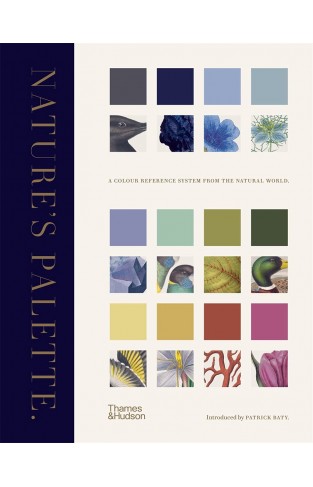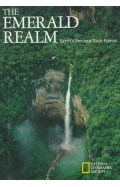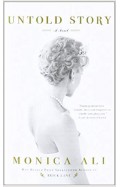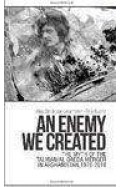- Home
- Education and Reference
- Science
- Nature's Palette: A colour reference system from the natural world
Nature's Palette: A colour reference system from the natural world
By: Patrick Baty
-
Rs 12,595.50
- Rs 13,995.00
- 10%
You save Rs 1,399.50.
Due to constant currency fluctuation, prices are subject to change with or without notice.
In Nature’s Palette this technicolour trove has, for the first time, been enhanced with the addition of illustrations of the animals, vegetables and minerals Werner referenced alongside each colour swatch and accompanied by expert text explaining the uses and development of colour standards in relation to zoology, botany, minerology and anatomy. This fully realized colour catalogue includes elegant contemporary illustrations of every animal, plant or mineral that Syme cited. Readers can see for themselves Tile Red in the Cock Bullfinch’s breast, Shrubby Pimpernel and Porcelain Jasper; or admire the Berlin Blue that Syme identified on the wing feathers of a Jay, in the Hepatica flower and in Blue Sapphire. Displays of contemporary collector’s cabinets of birds, butterflies, eggs, flowers and minerals are interspersed at intervals throughout the compendium, with individual specimens colour matched to colour swatches. Still a much-loved reference among artists, naturalists and everyone fascinated by colour today, Werner’s Nomenclature of Colours finds its fullest expression in this beautiful and comprehensive colour reference system.
With 1000 illustrations in colour
In Nature’s Palette this technicolour trove has, for the first time, been enhanced with the addition of illustrations of the animals, vegetables and minerals Werner referenced alongside each colour swatch and accompanied by expert text explaining the uses and development of colour standards in relation to zoology, botany, minerology and anatomy. This fully realized colour catalogue includes elegant contemporary illustrations of every animal, plant or mineral that Syme cited. Readers can see for themselves Tile Red in the Cock Bullfinch’s breast, Shrubby Pimpernel and Porcelain Jasper; or admire the Berlin Blue that Syme identified on the wing feathers of a Jay, in the Hepatica flower and in Blue Sapphire. Displays of contemporary collector’s cabinets of birds, butterflies, eggs, flowers and minerals are interspersed at intervals throughout the compendium, with individual specimens colour matched to colour swatches. Still a much-loved reference among artists, naturalists and everyone fascinated by colour today, Werner’s Nomenclature of Colours finds its fullest expression in this beautiful and comprehensive colour reference system.
With 1000 illustrations in colour
Nature's Palette: A colour reference system from the natural world
By: Patrick Baty
Rs 12,595.50 Rs 13,995.00 Ex Tax :Rs 12,595.50
Zubin Mehta: A Musical Journey (An Authorized Biography)
By: VOID - Bakhtiar K. Dadabhoy
Rs 892.50 Rs 1,050.00 Ex Tax :Rs 892.50
Horizons - A Global History of Science
By: James Poskett
Rs 3,447.50 Rs 6,895.00 Ex Tax :Rs 3,447.50
The Emerald Realm: Earth's Precious Rain Forests Hardcover – March 28, 1991
By: National Geographic Society
Rs 2,880.00 Rs 3,200.00 Ex Tax :Rs 2,880.00
A Thousand Brains - A New Theory of Intelligence
By: Jeff Hawkins
Rs 4,497.50 Rs 8,995.00 Ex Tax :Rs 4,497.50
What We Owe Each Other: A New Social Contract
By: Minouche Shafik
Rs 1,440.75 Rs 1,695.00 Ex Tax :Rs 1,440.75
The Origins of Political Order From Prehuman Times to the French RevolutioN
By: Francis Fukuyama
Rs 4,045.50 Rs 4,495.00 Ex Tax :Rs 4,045.50
Manning Up: How the Rise of Women Has Turned Men into Boys
By: Kay Hymowitz
Rs 845.75 Rs 995.00 Ex Tax :Rs 845.75
The Obama Syndrome: Surrender At Home War Abroad
By: Tariq Ali
Rs 1,100.75 Rs 1,295.00 Ex Tax :Rs 1,100.75
The Quest For Meaning: Developing A Philosophy Of Pluralism
By: Tariq Ramadan
Rs 1,185.75 Rs 1,395.00 Ex Tax :Rs 1,185.75
The Pakistan US Conundrum Jihadists The Military And The People The Struggle For Control
By: Yunas Samad
Rs 1,185.75 Rs 1,395.00 Ex Tax :Rs 1,185.75
An Enemy We Created: The Myth Of The Taliban Al Qaeda Merger In Afghanistan 19702010
By: Alex Strick van Linschoten
Rs 4,197.50 Rs 8,395.00 Ex Tax :Rs 4,197.50
WikiLeaks: Inside Julian Assanges War on Secrecy
By: David Leigh & Luke Harding
Rs 637.50 Rs 850.00 Ex Tax :Rs 637.50
Horizons - A Global History of Science
By: James Poskett
Rs 3,447.50 Rs 6,895.00 Ex Tax :Rs 3,447.50
The Emerald Realm: Earth's Precious Rain Forests Hardcover – March 28, 1991
By: National Geographic Society
Rs 2,880.00 Rs 3,200.00 Ex Tax :Rs 2,880.00
A Thousand Brains - A New Theory of Intelligence
By: Jeff Hawkins
Rs 4,497.50 Rs 8,995.00 Ex Tax :Rs 4,497.50
What We Owe Each Other: A New Social Contract
By: Minouche Shafik
Rs 1,440.75 Rs 1,695.00 Ex Tax :Rs 1,440.75
No recently viewed books available at the moment.
Zubin Mehta: A Musical Journey (An Authorized Biography)
By: VOID - Bakhtiar K. Dadabhoy
Rs 892.50 Rs 1,050.00 Ex Tax :Rs 892.50
Nature's Palette: A colour reference system from the natural world
By: Patrick Baty
Rs 12,595.50 Rs 13,995.00 Ex Tax :Rs 12,595.50
Horizons - A Global History of Science
By: James Poskett
Rs 3,447.50 Rs 6,895.00 Ex Tax :Rs 3,447.50
The Emerald Realm: Earth's Precious Rain Forests Hardcover – March 28, 1991
By: National Geographic Society
Rs 2,880.00 Rs 3,200.00 Ex Tax :Rs 2,880.00
A Thousand Brains - A New Theory of Intelligence
By: Jeff Hawkins
Rs 4,497.50 Rs 8,995.00 Ex Tax :Rs 4,497.50
What We Owe Each Other: A New Social Contract
By: Minouche Shafik
Rs 1,440.75 Rs 1,695.00 Ex Tax :Rs 1,440.75














-120x187.jpg?q6)










-120x187.jpg?q6)



-120x187.jpg?q6)



